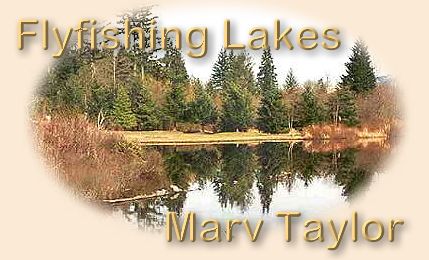|
After the angler has purchased the best rod and
reel he can afford, added the right terminal
tackle - lines, leaders, tippets, and flies - and
learned how to cast, how does he/or she, put
everything together, and make consistent presentations
to fish so that these little animals with a "brain the
size of a pea," will become confused and consider
these offerings of feathers and fur, something edible.
That's what fly fishing is all about. The mental part.
That's what separates the "top guns" from the "also runs."
That's why there is a FAOL waiting in the wings.
Even when you cough up enough dinero to fish the expensive
pay-to-play fishing holes, you can still have days when
the fish seem to have blind-folds on. Everybody has been
skunked now and then. Well...almost everybody.
Here and there in my career, I've met anglers who day
after day, week after week, month after month, catch
more fish than other fishermen, on any water they fish.
Do they have a magic fly that allows them always to take
fish? Not really. More often than not, the fly is of
secondary importance. Presentation is usually the key.
I had the pleasure during the summer of 1974, of spending
a week in central Oregon with Hal Janssen, the California
wizard who seems always to catch fish, even when other
anglers around him are crying "uncle." We fished legendary
Hosmer Lake one afternoon, for example, when the fishing
was tough. The other half dozen or so fishermen on the
lake that afternoon took, according to one of the group
(it was a local fly club), six Atlantic salmon. Hal caught
and released 30 (I caught three). Even though I had the
best "guide" on the lake, I spent most of my time following
Hal around with my camera, and didn't really fish that much.
What was Hal doing that made him the day's Top Gun?
He had figured out before we ever launched our float crafts
(I was using a tube, Hal his dingy), that there was a
"false hatch" of callibaetis mayflies. He pulled out a
pattern he ties that looks like a mayfly nymph settling
back to the bottom; It has its legs spread out wide,
nstead of tucked in. (I've included the Janssen Turkey
Callibaetis in every pattern book I've done).
Since the Atlantic salmon of Hosmer Lake tend to constantly
circle the lake in schools, Hal would wait until he saw a
school coming, cast his Turkey Callibaetis well ahead of
the fish, and wait until one of them picked off his
settling nymph. Which happened every single time Hal
intercepted a school of salmon.
The technique was really quite simple. "Elementary, dear Watson,"
Hal laughed, "it's all in the presentation."
The following year, Hal and I were fishing the famed
Glory Hole at Henry's Lake's Staley Springs and the
fishing was really slow. None of the dozen fly fishermen
we talked with when we got there had caught anything.
Hal studied the water for about 10 minutes, as he was
gearing up, and asked me if I had any of my "tan caddis
pupas" with me. "The one with the dark brown stripe down
its side" (it was a pattern I had given Hal the year
before in central Oregon)?
"I think they're still working on the night caddis," Hal
told me.
There's a massive caddis emergence at Henry's that occurs
at night. Since the fishing ends at 9 pm and begins at
5 am, angler's can't (legally) take advantage of this
enormous hatch of very large caddisflies.
Hal cast my caddis pupa into the mouth of the Glory Hole,
let it sink for about 20 seconds, then began a very
seductive retrieve.
"There," he laughed. "He's licking it...he's about ready."
"Sure he is Hal..." I said, rolling my eyes.
About that time, Hal reared back and set his hook
into a 3-pound Henry's Lake cutthroat. During the next
two hours, Hal caught an released a dozen nice cutthroat
and hybrids, while the rest of us fishing the Glory Hole
were mostly practicing our casting.
I'm not at all sure Hal could feel the fish "licking" his
fly (bumping it a bit perhaps). I think it was actually
his almost arrogant confidence that he had figured out
how to catch them, and he should have a fish following
his fly on each and every cast.
And rubbing salt into the wound, Hal had caught all of
his fish on a fly that he had borrowed from me. A fly
I could not get the fish to even look at. Now that I look
back at the episode, I think Hal had been paying close
attention to my "angle of emergence" theory, years before
I even knew what the concept was.
If Hal Janssen has one trait that seems to guide him in
everything he does, it is his power of positive thinking.
He is a supremely confident person. I remember him
telling me one day when we were fishing central Oregon,
that I would never be a really competent fly fisherman
until I was absolutely "positive" I knew what I was doing.
I'm not sure I'm even half way there as I write this report.
MAKE THE PROPER ASSUMPTIONS
When others are catching fish, and I'm not, I make some
assumptions. I assume, without exception, that the
successful anglers are doing several things different
from what I'm doing. I may or may not question the
other fishermen, but I can learn a lot by simple
observation.
Since the anglers around me are catching fish, I know
I'm in the right area and that the fish "are" feeding.
My next assumption is that these successful fishermen
are not using the same type and size fly I'm using. If
I was anywhere in the ball park with my fly patterns,
I would be experiencing some degree of success.
Unless we are fishing shallow water, I assume they are
fishing deeper than I am. I also assume they are using
smaller flies than I am.
I also assume they are using a different retrieve than
I'm using. By simple observation, I can determine the
type of sinking line they might be using, and I can
count their line down, and determine their retrieve.
If I can't see their fly, they are probably using a
small wet fly or nymph.
It's amazing to me that unsuccessful fly fishermen will
often change flies every five minutes, but continue
fishing the same line, and the same retrieve all day long.
If and when I begin to get negative on a day of fishing,
I ask myself what Hal might do in the same situation.
While I can't say exactly, the one thing I know Hal
would never do...is give up.
SCOUTING FOR WILLING FISH
Although it isn't written in stone, I have a system
of fishing difficult lakes that works for me most
of the time.
If I do not see any fish feeding on the surface, I
start my day by working the nearest structure ridge
(a point of land that feeds down into the lake).
If the lake appears to have depths up to 25- or
30-feet, I will begin with a Type III full sinking
line, working both sides of the structure ridge with
a searching pattern, like a size 12 Sheep Creek
Special. "Scratching the bottom" with my flies as I go.
I will work my way out the ridge to the deepest point.
I will vary my retrieves until I've pretty much covered
all my standard line retrieval techniques.
I may change fly patterns once or twice: Usually going
from the dark-olive Sheep Creek, to a brown pattern like
the Canadian Brown Leech, then to a Stayner Ducktail
or a Blonde Stayner streamer.
If I've reached a point in the lake where it is 25 feet
or more deep, and haven't caught fish, I will switch to
a faster sinking line (Type IV, V, or VI) and try fishing
a deep water pattern, like a crawdad. I will work my fly
slowly along the bottom, retrieving it now and then with
a faster retrieve.
At some point in deeper water, I will try my Taylor Shrimp,
some size 12 or 14 dark-olive chironomids, and a leech or
two. Changing retrieves all the time.
If I still haven't caught fish by this time, I will work
my way back into the 12- to 20-foot depths. I will go back
to a Type III sinking line and fish my standard search
patterns. I will vary my retrieves until I'm convinced
the fish are not feeding in the area.
I will then move to the 6- to 12-foot depths, with a Type
I or Type II lines, concentrating primarily on chrironomid
and caddis patterns. I will spend a lot of time with short
casts, concentrating on a steep angle of emergence.
If that doesn't work, I will move into water less than 6
feet deep. I will use either an Intermediate or Type I
slow sinker with several of my favorite midge and caddis
patterns, as well as my Stayner Ducktails and Blonde
Stayners. (Before somebody on the Bulletin Board asks
the question....Yes, I do often use a fish/depth finder
on my float tube or pontoon boat. When I don't have it
with me, I make educated guesses as to depths).
If there are still no fish working the surface, I will
begin the whole process all over again. Somewhere along
the way, I'll usually find a winning presentation. The
one thing I rarely do, is admit I'm not going to catch
fish.
Once during an appearance before a fly fishing club in
Portland, Oregon, a member of the audience scoffed at
my changing lines and retrieves all day long. Must be
really boring having to change lines all day long.
Not half as boring, I told him, as not catching fish.
MARV'S FLY OF THE WEEK

JANSSEN TURKEY CALLIBAETIS
Hook: Mustad 3906 (or 1XL equivalent), 12 - 16.
Weighted with 10 wraps of .010" fuse wire.
Thread: Tan 6/0, prewaxed.
Tail: Mottled natural turkey flight feather fibers, 4 to 6.
Abdomen: Mottled natural turkey flight feather fibers, wound on.
Thorax: Mottled natural turkey flight feather fibers,
slightly larger.
Wing-case: Gray goose quill section.
Legs: Partridge; hackle fibers. Spread out for the sinking nymph,
folded back for the emerging nymph.
HEAD: Tan.
The pattern can also be tied with dyed turkey feathers.
I've dyed feathers in the following colors: light-and
dark-brown, light- and dark-olive, and gold.
The callibaetis mayfly is found mostly in stillwater.
Those stillwater areas may be found in sloughs and
lagoons along rivers and streams; but more often
they exist in the form of lakes, ponds, and reservoirs.
Each year there are usually three generations of
callibaetis in most of the lakes I fish. In colder
climates there may be only one or two hatches.
The mottled little callibaetis nymphs are agile swimmers
and favorites of both fish and other underwater predators.
Fully developed they range from one-quarter to three-eights
inches in length.
I fish four patterns when I think the fish are feeding
on callibaetis nymphs: A Gold Ribbed Hare's Ear, a Muskrat
Nymph, my Silver Muskrat Emerger (soon to be featured
in this column), and the Janssen Turkey. ~ Marv
About Marv
Marv Taylor's books, Float-Tubing The West,
The Successful Angler's Journal,
More Fragments of the Puzzle, (Volume I) and More
Fragments of the Puzzle, (Volume II) are all available from
Marv. You can reach Marv by email at
marvtroutman@juno.com or by phone: 208-322-5760.
|



